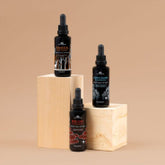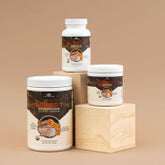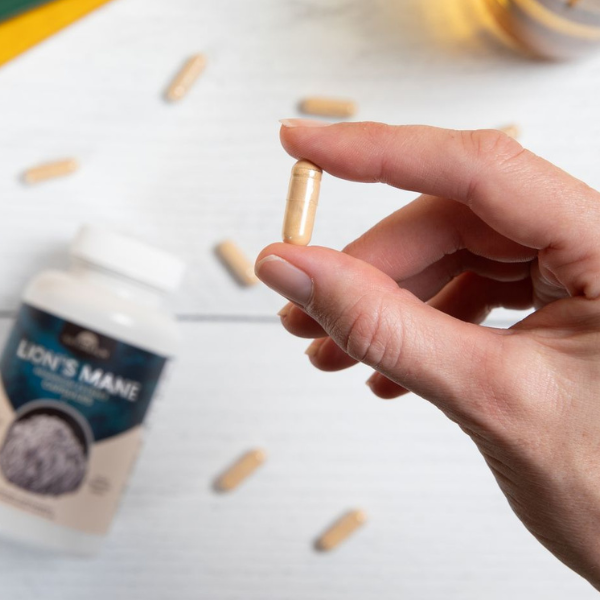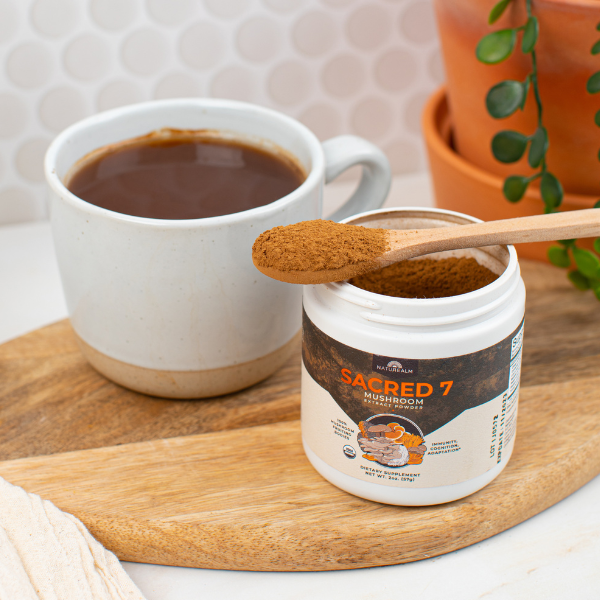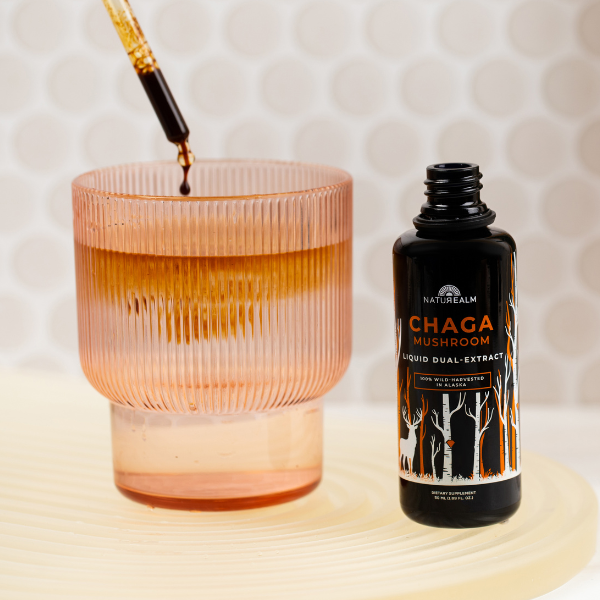
The Antioxidant Properties and ORAC Value of Chaga Mushroom
The Chaga mushroom (Inonotus obliquus) is a powerful medicinal mushroom with several noted health benefits, such as immune modulation and anti-inflammatory properties. Commonly found on birch trees in colder climates, this conk mushroom has been used by traditional folk medicine throughout Russia and Siberia, yet modern studies back these health claims. Analysis of the fungi’s fruiting body has found that Chaga contains high antioxidant properties that can contribute to one’s overall wellness.
Chaga’s antioxidants against free radicals

So why exactly are antioxidants so good for you?
Let’s take a step back and discuss free radicals, which are unstable, highly reactive molecules that can harm the molecular structure of cells. They can accumulate in the body through natural metabolic processes and external factors like smoking, pollution, and x-rays (1).
Since free radicals are unpaired electrons, they can add or remove electrons from other molecules in your body. Oxidative stress can occur when there is an imbalance between high free radicals in the body and low levels of antioxidant defenses. As a result, biological changes can manifest as cancer, cardiovascular diseases, cataracts, and other diseases.
Antioxidants are beneficial to the body because they protect cells from damage caused by free radicals. The molecular structure of antioxidants is stable enough to donate an electron to a free radical cell, therefore neutralizing its reactivity. Antioxidant-rich functional mushrooms like Chaga can prevent free radical damage and support balance within the body on a molecular level.
What is ORAC?
An ORAC score is a way to measure the antioxidant content in food and supplements. The higher the ORAC score is, the more antioxidant capacity is present.
Here are a few superfoods Chaga stacks up against:
-
Chaga:
146,700 μ mol TE/100g
-
Acai berries:
102,700 μ mol TE/100g
-
Dark Chocolate:
20,816 μ mol TE/100g
-
Reishi Mushroom (Ganoderma lucidum):
9,244 μ mol TE/100g
-
Blueberries:
4,669 μ mol TE/100g
ORAC is measured in units of micromoles of Trolox (μ mol TE) per 100 grams of food. Trolox is a water-soluble derivative of the vitamin E antioxidant that serves as a standard for measuring antioxidant capacity.
Chaga’s high ORAC (oxygen radical absorbance capacity) score of 146,700 μ mol TE/100g is nearly 50% higher than the Acai berry, which has a score of 102,700 μ mol TE/100g. The units of measurement may be confusing, but one thing is for sure – Chaga is undoubtedly high in antioxidants.
The benefits of chaga antioxidants
The antioxidant activity in Chaga makes the mushroom an adaptogen, which helps the body manage stress and adapt to external stressors to restore physiological balance. There are several kinds of antioxidant compounds in Chaga mushrooms, such as polyphenols, polysaccharides, melanin, and triterpenes. The variety of these bioactive compounds contributes to Chaga’s high ORAC score. Chaga’s antioxidant properties are known for a variety of health benefits:
Improves the immune system response
Too many free radicals can compromise our body’s immunity by damaging immune cells. Clinical trials have found that antioxidants protect immune cells from being attacked, therefore keeping the immune system strong (2).
Helps prevent type 2 diabetes
When blood sugar concentrations are too high, glucose oxidizes and becomes free radicals. This oxidative stress can contribute to the development and advancement of diabetes. Antioxidants stop this oxidization and help regulate glucose metabolism (3).
Anti-cancer properties
Studies have correlated oxidative stress and carcinogenesis, which is the formation of cancer cells. Chaga contains an antioxidant enzyme called superoxide dismutases which helps revert the cancer phenotype (4). As a result, the enzyme can regulate the progression of cancer cells by preventing more ones from mutating.
Adding chaga to your daily routine
If you’re scavenging for your own Chaga, you can boil it in water and make a Chaga tea, but keep in mind that it will not have the full effect of all the antioxidant compounds because some of them are not water-soluble. To get the most out of Chaga, you will need to process it through a month-long dual extraction process which draws out compounds with a combination of alcohol and hot water extraction.
That’s why we recommend investing in a high-quality tincture such as Naturealm’s Chaga Mushroom Extract Tincture, which has already gone through the dual extraction method. Adding Chaga mushrooms to your supplement routine can be as easy as adding a few drops to your morning coffee or smoothie, giving you an antioxidant boost any time of the day.
Although oxidative stress is inevitable, we can take our wellness into our own hands through preventative care to keep our bodies in a regulated balance between free radicals and antioxidant compounds. Chaga might not be the prettiest medicinal mushroom out there, but it definitely packs a punch with its insanely high antioxidant quantity.
References
1.) Park, Yoo Kyoung, Hyang Burm Lee, Eun-Jae Jeon, Hack Sung Jung, and Myung-Hee Kang. 2004. “Chaga Mushroom Extract Inhibits Oxidative DNA Damage in Human Lymphocytes as Assessed by Comet Assay.” BioFactors 21 (1-4): 109–12. https://doi.org/10.1002/biof.552210120.
2.) Bendich, A. 1993. “Physiological Role of Antioxidants in the Immune System.” Journal of Dairy Science 76 (9): 2789–94. https://doi.org/10.3168/jds.S0022-0302(93)77617-1.
3.) Bajaj, Sarita, and Afreen Khan. 2012. “Antioxidants and Diabetes.” Indian Journal of Endocrinology and Metabolism 16 (Suppl 2): S267-71. https://doi.org/10.4103/2230-8210.104057.
